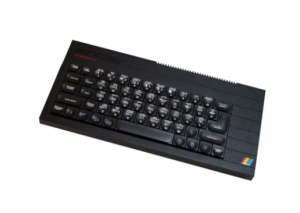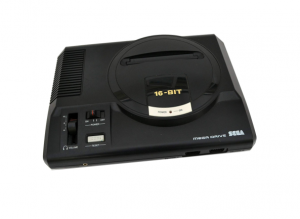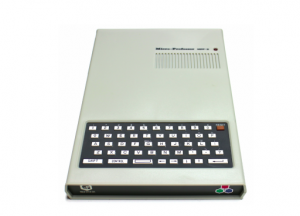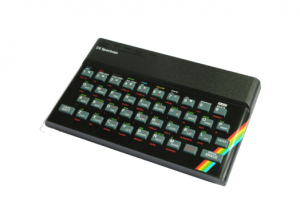Sony’s Early Endeavour into Home Computing
Before the PlayStation, before Sony was a household name in gaming, the Japanese electronics giant had an ambitious vision: to bring Sony-branded computing into homes worldwide. This vision materialized in the form of the Sony HitBit line of home computers, released during the 1980s. While they never achieved the enduring success of later Sony consoles, the HitBit machines remain a fascinating chapter in the history of personal computing — one that reflects both the promise and limitations of the MSX standard they were built upon.
The MSX Standard and Sony’s Entry
In the early 1980s, the home computer market was highly fragmented. Each manufacturer — from Commodore to Apple to Sinclair — had its own proprietary hardware and software, making compatibility a nightmare. In 1983, Microsoft Japan’s Kazuhiko Nishi introduced the MSX standard, aiming to create a unified platform for home computers in the way VHS had standardized videotape. The MSX specification defined the architecture, but left room for manufacturers to differentiate in design and features.
Sony, eager to expand its consumer electronics empire, embraced the MSX concept. In 1983, it introduced the Sony HitBit line, targeting students, hobbyists, and small offices. The name “HitBit” was meant to evoke a blend of high technology (“bit”) and consumer appeal (“hit”), positioning the computers as trendy yet functional.
Design and Models
HitBit computers stood out for their build quality and sleek industrial design, hallmarks of Sony products. Early models like the HB-55 and HB-75 used a compact, all-in-one keyboard form factor, with the computer’s mainboard built into the keyboard housing. This kept costs down and appealed to households with limited desk space. The keyboards often featured function key strips with paper inserts for labeling, a nod to user customization.
Sony’s range eventually expanded to include higher-end models such as the HB-101, HB-201, and the HB-F900, the latter belonging to the MSX2 generation, which supported enhanced graphics, more memory, and improved disk handling. Some models incorporated built-in floppy disk drives, a luxury at the time, while others relied on cassette tapes for storage — a slower but more affordable option.
Technical Specifications
While specifics varied by model, the first-generation HitBits were based on the MSX1 standard:
-
CPU: Zilog Z80A running at 3.58 MHz
-
RAM: Typically 64 KB (some models 16 KB or 32 KB)
-
Video: Yamaha VDP supporting 16 colors and up to 256×192 resolution
-
Sound: AY-3-8910 programmable sound generator (3 channels)
-
Storage: Cassette interface, optional floppy drives on higher models
-
Cartridges: Two MSX cartridge slots for software, games, and expansions
The MSX2 HitBits, introduced from 1985 onward, upgraded the VDP for richer graphics (up to 512×212 resolution, 256 colors) and added more RAM, sometimes up to 256 KB. This allowed more sophisticated applications and visually advanced games.
Software and Gaming
One of the biggest draws of the HitBit — and of the MSX standard in general — was the library of cartridge-based games. Major Japanese developers like Konami, produced hits for MSX that could be played on any compliant system, including the HitBit. Titles such as Metal Gear, Gradius, and Penguin Adventure gave HitBit owners access to the same experiences enjoyed by owners of rival MSX machines.
Beyond gaming, the HitBit also supported productivity software — word processors, spreadsheets, educational programs — often localized for specific markets. Sony released several creative tools under its own branding, including music composition programs that leveraged the AY sound chip, and art tools that took advantage of the HitBit’s graphic capabilities.
International Markets
Sony targeted both domestic and international markets with the HitBit. In Japan, the machines competed with offerings from Panasonic, Yamaha, and Toshiba, often marketed as stylish and slightly premium. In Europe, particularly Spain, the Netherlands, and the UK, the HitBit gained a modest following thanks to MSX’s push in those regions. Latin America, especially Brazil, also saw some presence, though local clones and licensing deals were more common there.
Despite these efforts, MSX never truly cracked the US market, where the Commodore 64, Apple II, and later IBM PC compatibles dominated. This limited the global penetration of the HitBit brand.
The Decline
By the late 1980s, the MSX platform began losing ground to more powerful personal computers like the Amiga and Atari ST, as well as the rapidly growing IBM PC compatible ecosystem. Sony continued to produce MSX2 and MSX2+ models, but the market’s enthusiasm waned. By the early 1990s, MSX was effectively a niche retro-gaming and hobbyist platform.
For Sony, the HitBit experiment was both a technological showcase and a lesson in the risks of backing a standard that failed to achieve universal adoption. While the HitBit line was well-regarded for its design and durability, it couldn’t overcome the shifting market dynamics.
Legacy
Its robust build, distinctive styling, and compatibility with a wide range of MSX software make it a sought-after collector’s item. Emulators allow modern users to experience the HitBit’s library, and some hobbyists still develop new software for MSX hardware. In a way, the HitBit foreshadowed Sony’s later success with the PlayStation: a stylish, powerful entertainment device built on a strong foundation of third-party software. The difference was that with PlayStation, Sony controlled the platform outright rather than relying on an industry-wide standard. While the HitBit never became the “VHS of home computers,” it remains a charming and important milestone in Sony’s evolution from an electronics manufacturer into a major player in interactive entertainment.
The Strengths of the Sony HitBit Compared to Other MSX Computers and the Commodore 64
The Sony HitBit series, introduced in 1983, was Sony’s flagship contribution to the MSX standard. While the MSX ecosystem included many manufacturers — Panasonic, Yamaha, Toshiba, Sanyo, and others — Sony’s HitBit models carved out a distinct identity. They also competed indirectly with non-MSX systems such as the Commodore 64, which was a market leader in the home computer segment throughout the 1980s. Although the HitBit shared much of its underlying architecture with other MSX machines, Sony’s execution brought unique advantages in design, usability, and features. Sony’s reputation for sleek, durable consumer electronics carried over to the HitBit line. Compared to many other MSX machines, which could feel utilitarian or plain, the HitBit offered:
-
Sturdy construction with high-quality plastics that resisted yellowing over time.
-
Elegant styling with clean lines, attractive color schemes, and well-integrated function keys.
-
Compact form factor with all components integrated into the keyboard unit, saving desk space.
In contrast, many competitors in the MSX market offered boxy, less refined designs. Even the Commodore 64 — though iconic — had a more basic and bulkier aesthetic.
Sony emphasized usability in the HitBit series:
-
Function key label strips allowed users to customize commands for software, reducing the learning curve for beginners.
-
Well-laid-out keyboards with comfortable key travel, giving a more “typewriter-like” feel than many rivals.
-
Built-in software tools on some models, such as introductory programs, basic drawing tools, or music composition utilities.
Other MSX systems sometimes lacked these small but thoughtful features. The Commodore 64 had excellent third-party support, but its keyboard layout was less intuitive for productivity tasks.
Sony was among the first to embrace MSX2, the upgraded version of the MSX standard introduced in 1985. MSX2 models like the HB-F700 and HB-F900 offered:
-
Higher resolution graphics (up to 512×212) and richer color palettes (up to 256 colors).
-
More RAM, enabling larger and more complex applications.
-
Built-in 3.5″ floppy disk drives in certain models, a step ahead of many MSX rivals still relying on cassette storage.
The Commodore 64’s VIC-II graphics chip remained powerful for its time, but by the mid-1980s, MSX2 HitBits could produce sharper, more detailed visuals.
While all MSX computers had the same AY-3-8910 sound chip by default, Sony leaned into multimedia creativity:
-
Bundled or promoted music creation software that appealed to hobbyist composers.
-
Support for video titling and editing on higher-end models, integrating with Sony’s video equipment — a unique selling point.
-
A focus on art and animation programs that took advantage of MSX2’s enhanced graphics modes.
The Commodore 64’s SID sound chip was still superior for pure audio synthesis, but the HitBit’s multimedia ecosystem had better integration with Sony’s video hardware, which was unmatched in the home computing space.
In markets like Spain, the Netherlands, and Japan, the HitBit benefited from Sony’s premium brand image. It was marketed not just as a computer but as a modern, stylish lifestyle product. This helped it stand out from other MSX models that were marketed mainly on technical specifications or price.
Commodore’s brand was strong in the US and parts of Europe, but Sony’s electronics pedigree gave the HitBit extra credibility in video, audio, and design-conscious segments.
Because it adhered to the MSX standard, the HitBit could run:
-
Thousands of MSX cartridge-based games and software titles.
-
Hardware expansions, including memory upgrades, additional ROM cartridges, and even video digitizers.
This compatibility gave it the same software breadth as other MSX machines, while Sony’s models often had better build quality and keyboard ergonomics for those same programs.
Compared to other MSX computers, the Sony HitBit stood out for its industrial design, usability features, early adoption of MSX2, and multimedia focus. Against the Commodore 64, the HitBit offered sharper design, higher resolutions in later models, and stronger integration with video and music production tools — though it couldn’t match the C64’s legendary SID sound chip or massive software library in the Western market.
For buyers in the 1980s who valued style, build quality, and multimedia potential, the Sony HitBit was one of the most attractive MSX options available. While it didn’t achieve the Commodore 64’s commercial dominance, it remains a symbol of Sony’s early ambition to fuse computing and consumer electronics into a single, elegant package































